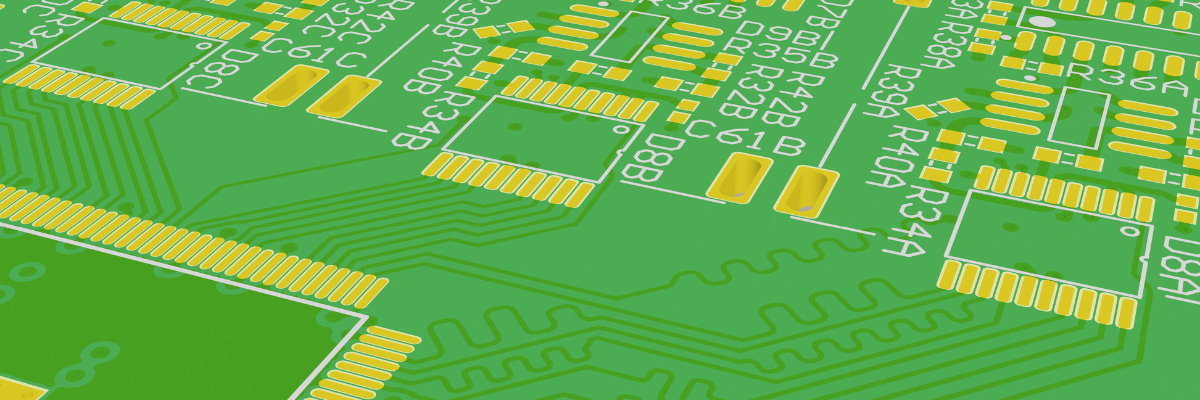The electronics industry is undergoing a transformative shift towards sustainability, marked by the widespread adoption of green PCB technologies. This pivot to environmentally friendly manufacturing is basically changing the production processes of electronic devices, prioritizing ecological responsibility. Green PCBs have emerged as an ideal solution to the issues of electronic waste and hazardous substances typically used in PCB production. There is much focus on eco-friendly and sustainable PCB manufacturing practices that help eliminate harmful materials and reduce waste. This approach helps PCB companies comply with stringent environmental regulations and appeal to environmentally conscious consumers. Moreover, technological and materials science advancements have expedited the development of green PCBs that are eco-friendly, being recyclable, and at times biodegradable. This post discusses the importance of adopting green PCBs for achieving sustainability that is vital for the future of electronics manufacturing.
Eco-Friendly Techniques Used in PCB Manufacturing
Sustainability in PCB manufacturing has transitioned from a specialized focus to a core element of responsible business operations. PCB manufacturers and assembly service providers are increasingly adopting eco-friendly practices and green technologies, which not only reduce environmental footprints but also ensure the production of high-quality PCB boards. Additionally, the electronics industry is intensifying its efforts towards sustainable practices in PCB manufacturing and assembly to lessen environmental impacts and improve human health. Below are several critical eco-friendly methods currently being adopted.
- Lead-free materials and RoHS compliance: The adoption of lead-free materials and compliance with the Restriction of Hazardous Substances (RoHS) directive are gaining importance in PCB manufacturing. Eliminating lead and other harmful substances not only mitigates health and environmental risks but also ensures regulatory compliance. This shift towards lead-free soldering materials aligns with global standards, facilitating the production of safer, high-quality PCBs that are acceptable in international markets.
- Use of recyclable materials: The focus on recyclable PCBs involves using materials like copper and aluminum that can be recycled at the end of a product’s lifecycle. By incorporating these recyclable substrates and metals into PCB manufacturing, the industry not only reduces the demand for new resources but also enhances recycling opportunities. Experiments are being conducted on using paper and films as PCB substrates, which may be a transformational step. This shift towards using easily recyclable materials is pivotal in promoting sustainability within the electronics sector.
- Implementation of ecofriendly coatings: The integration of green technologies in PCB manufacturing enhances sustainability by reducing environmental impacts and improving product quality. Water-based inks and coatings reduce harmful chemicals, while selective soldering techniques minimize solder use and waste. Additionally, employing green chemistry in the PCB design process decreases environmental damage. These technologies collectively contribute to the eco-friendliness of the manufacturing process and the production of high-quality PCBs.
- Green standards and certifications: ISO 14001 and Electronic Product Environmental Assessment Tool (EPEAT) certifications emphasize on PCB manufacturers’ dedication to environmental management by developing standards for decreasing ecological impacts. Furthermore, manufacturers that track and openly report their carbon footprint help increase transparency, making OEMs to opt products based on their environmental preferences. These certifications and measures reflect a committed effort to reduce environmental hazards and advance sustainability within the electronics sector.
Benefits of Sustainable Practices in PCB Assembling
Sustainable practices in PCB manufacturing and assembling deliver comprehensive advantages that go beyond simply preserving the environment, significantly impacting aspects such as cost efficiency, innovation, brand reputation, and long-term operational sustainability. Here are some pointers.
- Cost Efficiency: Implementing sustainable manufacturing methods leads to reduced usage of materials and energy, which in turn decreases production costs. Additionally, efficient practices in waste management and recycling help lower expenses related to disposal and the procurement of raw materials.
- Innovation and Market Differentiation: The adoption of green technologies drives innovation within the industry, leading to the development of novel products and processes. These advancements not only improve operational efficiency but also provide a competitive advantage in the marketplace.
- Business Sustainability: By aligning operations with global sustainability objectives and adapting to evolving consumer expectations, companies can secure their long-term success. This strategic alignment prepares businesses to navigate the challenges of dwindling resources and increasingly stringent environmental regulations effectively.
- Improved Brand Perception: A strong commitment to sustainability enhances a company’s public image and reputation, which can increase consumer loyalty as more individuals seek to support businesses that prioritize environmental responsibility.
- Environmental Benefits: The use of eco-friendly materials such as lead-free solder and recyclable components, along with processes that minimize waste and hazardous chemical use, significantly reduce the environmental impact of PCB manufacturing. These practices contribute to the preservation of natural resources and help in reducing overall pollution.
Future Trends in PCB Development
According to a report, the global market for sustainable electronics manufacturing is projected to grow at a CAGR of 25% from 2023 to 2030. By the end of this period, the market is expected to reach an exceptional value of USD 150 billion. Implementing sustainable practices in PCB manufacturing initially faces challenges such as high costs and the need for technological adaptation. However, as the industry progresses, these practices are likely to become more cost-effective and widespread. For example, the transition to lead-free solder initially increased production costs but is expected to decrease as more manufacturers adopt and optimize these greener methods, contributing to significant market growth in the coming years.
Are you looking for a PCB manufacturer and assembly service provider that prioritizes sustainability and innovation? Choose Rigiflex Technology for your green PCB requirements. Their commitment to environmentally friendly practices ensures that your projects not only meet but exceed industry standards while also protecting our planet. Contact us today to learn how they can help you with sustainable PCB solutions and contribute to a greener future.

